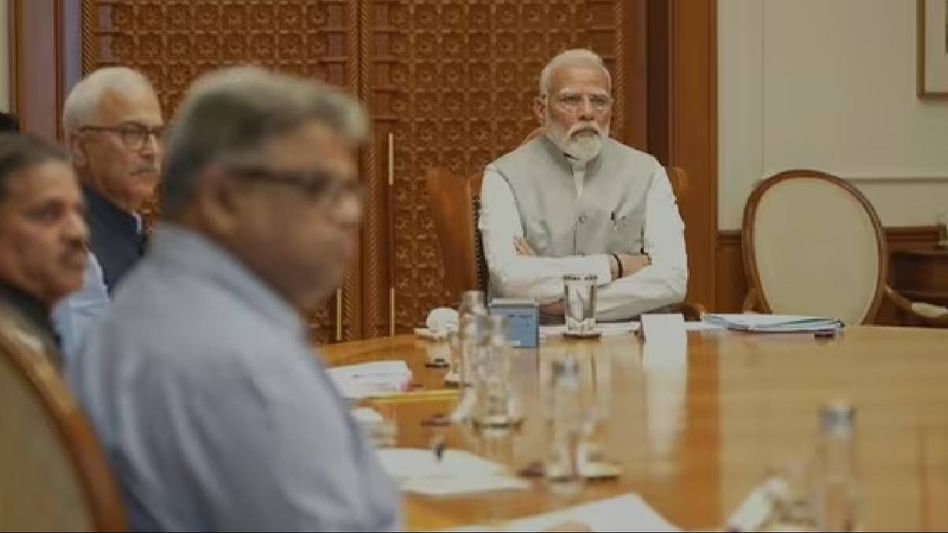PM Modi chairs meeting to prepare for Intensifying heat wave season
The meeting, convened to address the impending heat wave challenges, delved into the forecasted temperature patterns across Central and western peninsular India, with projections indicating a likelihood of above-normal maximum temperatures.
 PM Modi chairs meeting to prepare for Intensifying heat wave season
PM Modi chairs meeting to prepare for Intensifying heat wave seasonPrime Minister Narendra Modi led a high-level meeting on Thursday to assess the nation's readiness for the looming heat wave season, as India's meteorological agency predicts an alarming surge in scorching temperatures from April through June.
The meeting, convened to address the impending heat wave challenges, delved into the forecasted temperature patterns across Central and western peninsular India, with projections indicating a likelihood of above-normal maximum temperatures. Officials from the Prime Minister's Office disclosed that PM Modi was briefed extensively on the anticipated weather conditions during the April to June period.
Crucial discussions during the session extended to preparedness within the healthcare sector, encompassing assessments of essential medicine stocks, intravenous fluids availability, and ensuring an ample supply of drinking water to alleviate potential heat wave impacts.
Emphasizing the importance of a cohesive strategy, Prime Minister Modi urged for synchronized efforts across all levels of governance, stressing the necessity for seamless coordination between central, state, and district administrations, as well as various ministries. The Prime Minister underscored the imperative for heightened awareness campaigns alongside comprehensive hospital preparedness.
In attendance were high-ranking officials including the principal secretary to the prime minister, the home secretary, representatives from the India Meteorological Department (IMD), and the National Disaster Management Authority.
The timing of the review meeting holds significance as India braces for the mammoth Lok Sabha elections, recognized as the world's largest democratic exercise. With millions expected to participate in political rallies and queue up at polling booths, the government's preparedness for extreme weather events gains heightened importance.
Union Minister for Earth Sciences, Kiren Rijiju, emphasized the gravity of the situation during the IMD's seasonal temperature outlook briefing, highlighting the projected increase in extreme heat waves over the next three months. Rijiju affirmed that extensive preparations have been undertaken at both the central and state levels, underscoring the significance of a robust national disaster management plan.
The IMD's outlook pinpointed Gujarat, Madhya Maharashtra, and north Karnataka as the most heat wave-prone areas, with Rajasthan, Madhya Pradesh, north Chhattisgarh, Odisha, and Andhra Pradesh also susceptible to extreme heat conditions.
Copyright©2024 Living Media India Limited. For reprint rights: Syndications Today









